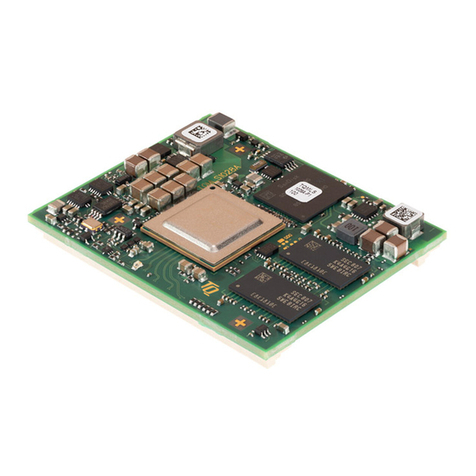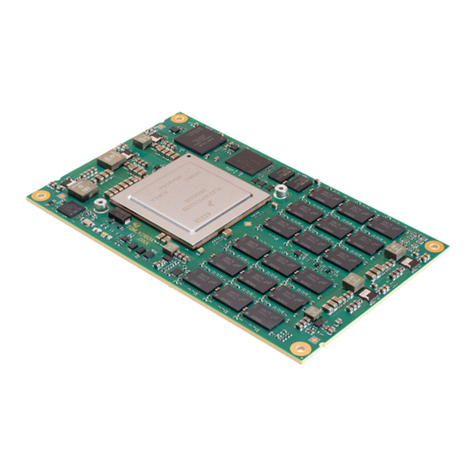
Preliminary User's Manual l TQMa8Xx UM 0002 l © 2018, TQ-Systems mbH Page i
TABLE OF CONTENTS
1. ABOUT THIS MANUAL................................................................................................................................................................................1
1.1 Copyright and license expenses.............................................................................................................................................................1
1.2 Registered trademarks ..............................................................................................................................................................................1
1.3 Disclaimer......................................................................................................................................................................................................1
1.4 Imprint............................................................................................................................................................................................................1
1.5 Tips on safety................................................................................................................................................................................................2
1.6 Symbols and typographic conventions ...............................................................................................................................................2
1.7 Handling and ESD tips...............................................................................................................................................................................2
1.8 Naming of signals .......................................................................................................................................................................................3
1.9 Further applicable documents / presumed knowledge.................................................................................................................3
2. BRIEF DESCRIPTION ....................................................................................................................................................................................4
2.1 Block diagram i.MX 8X...............................................................................................................................................................................4
2.2 Key functions and characteristics...........................................................................................................................................................5
3. ELECTRONICS ...............................................................................................................................................................................................6
3.1 Interfaces to other systems and devices..............................................................................................................................................6
3.1.1 Pin multiplexing ..........................................................................................................................................................................................6
3.1.2 Connector X1................................................................................................................................................................................................7
3.1.3 Connector X2................................................................................................................................................................................................8
3.1.4 Connector X3................................................................................................................................................................................................9
3.2 System components ............................................................................................................................................................................... 10
3.2.1 i.MX 8X CPU................................................................................................................................................................................................ 10
3.2.1.1 i.MX 8X derivatives................................................................................................................................................................................... 10
3.2.1.2 i.MX 8X errata ............................................................................................................................................................................................ 10
3.2.1.3 Boot modes................................................................................................................................................................................................ 10
3.2.2 Memory....................................................................................................................................................................................................... 11
3.2.2.1 DDR3L SDRAM .......................................................................................................................................................................................... 11
3.2.2.2 eMMC NAND flash ................................................................................................................................................................................... 11
3.2.2.3 QSPI NOR flash .......................................................................................................................................................................................... 12
3.2.2.4 EEPROM....................................................................................................................................................................................................... 12
3.2.2.5 EEPROM with temperature sensor...................................................................................................................................................... 13
3.2.3 RTC................................................................................................................................................................................................................ 13
3.2.4 Interfaces .................................................................................................................................................................................................... 14
3.2.5 Reset............................................................................................................................................................................................................. 14
3.2.6 Power........................................................................................................................................................................................................... 15
3.2.6.1 Power supply............................................................................................................................................................................................. 15
3.2.6.2 Power consumption................................................................................................................................................................................ 15
3.2.6.3 LICELL........................................................................................................................................................................................................... 15
3.2.6.4 ADC input voltage V_ADC_IN .............................................................................................................................................................. 16
3.2.6.5 USB_OT [2:1]_VBUS ............................................................................................................................................................................... 16
3.2.6.6 Provided TQMa8Xx voltages ................................................................................................................................................................ 16
3.2.6.7 Voltage monitoring................................................................................................................................................................................. 16
3.2.6.8 Power-Up sequence TQMa8Xx / carrier board ............................................................................................................................... 17
3.2.6.9 Power modes............................................................................................................................................................................................. 17
3.2.6.10 PMIC ............................................................................................................................................................................................................. 17





























